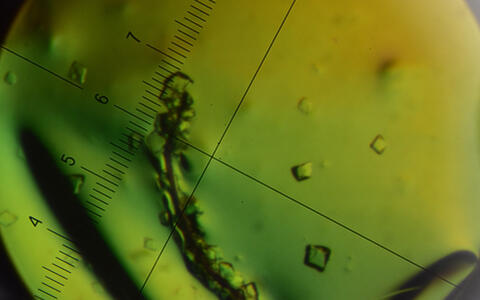#LabHacks: An unusual crystallization helper
Witches in fairy tales use special ingredients such as spiders’ legs and toad slime for their magic potions and ointments. Scientists at MDC use similarly odd tools to learn about the complex three-dimensional structure of proteins. These biological macromolecules perform a wide variety of tasks in our body, for example as structural components of muscles and skin or as antibodies for immune defense.
Researchers in Oliver Daumke’s workgroup determine the three-dimensional structure of proteins by crystallizing them. In order to do this, they have to achieve a regular arrangement of the proteins in a lattice, just like in sugar or salt crystals.
Exposing the crystals to X-ray light creates a diffraction pattern that allows the 3D structure of the protein to be derived. The larger the crystal and the more regular the lattice, the more precisely the researchers can determine the structure. A hunt for the perfect crystal is launched anew for every protein, since most proteins have little desire to integrate themselves into a strict regiment.
Using a cat's whisker to seed new crystals
How to the structural biologists get them to comply? That is where the cats come in, or to be precise, cat whiskers. They are used for a technique called micro-seeding, says Alexej Dick from Daumke’s group: “We crush crystals that are too small or misshapen. The cat whisker with its microscopically roughened surface is then drawn through the crystal particles. A few tiny crystals get caught on it.” In the next step, the scientists draw this whisker through a protein-charged solution. It leaves behind a trail of crystal particles and new protein crystals form along that. Ideally their quality is good enough to derive the structure of the protein.
The whiskers used in the laboratory are already a few years old. A cat owner brought them along. They can be used indefinitely – probably thanks to an especially complex protein structure.
Images: Editors, MDC











